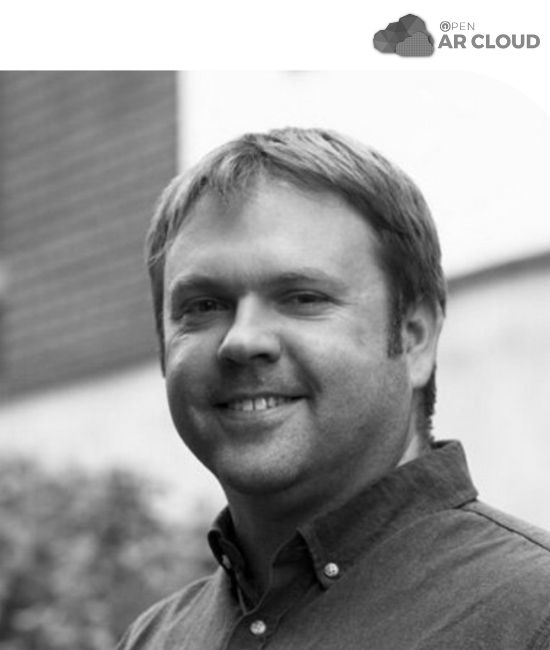03:00 PM - 03:25 PM
Description
LiFi is a technology that delivers highspeed data wirelessly to XR devices using light waves. Connect wirelessly to your devices where radio frequencies are not permitted due to security or safety reasons. Signify (formally Philips) is connecting XR devices with stable speeds of 250 Mbps, with ultra-low latency that is stable, safe and secure. This technology is being deployed in hospitals, military, oil and gas, mining and manufacturing. Find out how LiFi will enable wireless XR with even higher data throughput for superior performance.
Speakers
02:25 PM - 02:50 PM
Description
In 2019, Eliud Kipchoge chased a GPS-guided green laser into history and ran the first sub-2 hour marathon. In technical terms, the laser was a real-time positional indicator. Said differently, the green laser was a ghost-runner, a virtual running partner - a tech-enabled Enhanced Reality solution.
What if everyone - not just world-class athletes - had the ability to compete against a ghost runner in real time? Not vs. an abstract segment displayed on a watch or a cycling computer - but a visible projection in the natural field of view. Non-distracting, but instantly accessible. That's Enhanced Reality.
Mark Prince, GM of smart eyewear company ENGO, will present advances in display systems that can enable anyone to do exactly that. ENGO's product is the first wearable display for sports that achieves glanceability for instant access to data, light weight for comfort and practical use, long battery life required for general use and fir endurance sports in particular, and a high-performance display that works in all light conditions.
Prince will explain how ENGO's solution can be used to change the dominant mode of sports training from post-activity review and analysis to in-activity decision making - with the potential to unlock performance for runners, cyclists, and other athletes - much like a vehicle-based green laser helped Kipchoge break the 2-hour barrier. Prince will demonstrate how use cases like this will finally pave the way for mass adoption of AR technology beyond niche applications.
Speakers

05:10 PM - 05:35 PM
Description
Due to the demanding optical architectures of diffractive waveguide gratings used for augmented reality applications, the gratings must be manufactured to extremely high accuracies, or the image quality will suffer. The grating period has to match the designs within tens of picometers, and the tolerances for the relative orientation of the gratings are in the arcsecond range. Both the production masters and the replicated gratings need to be characterized nondestructively, and the grating areas scanned to ensure uniformity. The measurement system should work for surface relief and volume holographic gratings in various material systems. We describe a Littrow diffractometer that can perform this challenging task. A narrow-band and highly stable laser source is used to illuminate a spot on the sample. Mechanical stages with high-accuracy encoders rotate and tilt the sample, until the laser beam is diffracted back to the the laser. This so-called Littrow condition is detected through a feedback loop with a beam splitter and a machine vision camera. The grating period and relative orientation can then be calculated from the stage orientation data. With the system properly constructed, and custom software algorithms performing an optimized measurement sequence, it is possible to reach repeatability in the picometer and arcsecond range for the grating period and relative orientation, respectively. By carefully calibrating the stages or by using golden samples, absolute accuracy for the grating period can also reach picometer range.
Speakers

04:40 PM - 05:05 PM
Description
More than a decade ago, the industry started to signal interest in enabling core XR technologies. Around 6~8 years into that phase, the industry started seeing first generation XR devices introduced into the market with varying degrees of success. Just 2 years ago, we started to see an explosion in user interest in XR-related products, in part due to the pandemic influencing user behavior, but also thanks to companies trail-blazing in products and services. The question we continue to ask ourselves is: what are the devices and the user experience that should be offered to the end-users in the next 3~5 years? Goertek is proud of its legacy, and its continued investment into the XR category and we look forward to using this session to engage with the XR community.
Speakers

11:10 AM - 11:35 AM
Description
In the backdrop of the Metaverse, how does the real world fit in, what does open, interoperable, and ethical look like, and what is the role of the Web ? We explore some potential guiding principles for the real world Spatial Web and early steps to realization through standards activities and the Open Spatial Computing Platform (OSCP). Along the way, we highlight areas that present strong opportunities for academic research, standards, and open source contributions.
Speakers




01:00 PM - 01:25 PM
Description
The NVIDIA CloudXR SDK empowers developers to deliver highly complex applications and 3D data to low-powered VR & AR devices. We discuss what NVIDIA CloudXR is, how to get started integrating the SDK into your applications, and the benefits customers have shared during their development. We learn from Bentley Systems as they discuss how NVIDIA CloudXR introduces new ways of work while preserving and elevating existing AEC/O workflows for design and building.
Speakers

11:00 AM - 11:25 AM
Description
Whether hands free mobile displays or in situ data overlay, head-mounted augmented reality offers much to improve productivity and reduce human error in space. Unfortunately, existing solutions for tracking and holographic overlay alignment tend to rely on, or at least assume, earth gravity. Nothing inherent to a microgravity environment would make AR tracking impossible but several factors need to be taken into account. First, the high-frequency camera pose estimation uses SLAM, which relies on data from IMU sensors, which, by default accommodate the acceleration of gravity in their base measurements. Second, most holographic alignment strategies assume a consistent down direction. This session will explore strategies to mitigate these limitations.
Speakers

10:40 AM - 11:05 AM
Description
Smart glasses in a normal form factor will significantly change our everyday lives. tooz envisioned this more than a decade ago when the tooz journey began in the corporate research labs of ZEISS Germany. Starting with the first curved waveguide, tooz developed several generations of optical engines and provided a continuous stream of patented inventions to the smart glass industry. 5 years ago, Deutsche Telekom/T-Mobile joined the journey as a 50% shareholder and enabled the development of full smart glasses solutions based on tooz’ waveguides. At AWE 2022, tooz will launch its next breakthrough innovation on its mission to lead this market: tooz ESSNZ Berlin is the first market-ready smart glasses reference design with vision correction that will change the daily interaction of consumers with data, media and ecosystem interfaces. The underlying tooz technology is highly customizable, scalable, and marketable – Not in the future, but already today.
Speakers
